- Home
- Graham Hancock
The Mars Mystery: The Secret Connection Between Earth and the Red Planet Page 22
The Mars Mystery: The Secret Connection Between Earth and the Red Planet Read online
Page 22
SPEED ENERGY
Studies have been done of the possible consequences for the earth, and for human civilization, of collisions with various types and sizes of asteroids and comets. In order to grasp the results of these studies it is important to remember that with impactors of more than a few tens of meters in diameter such collisions will inevitably have catastrophic effects—witness, for example, the devastation caused by the Tunguska object in 1908.1
The reason is that these projectiles carry huge reservoirs of kinetic energy (the energy of motion of a body or system equal to the product of half its mass and the square of its velocity), which they surrender explosively, generating terrific shock waves, as they snowplow through the atmosphere.2 Then comes the smash with the planet’s surface that deposits sufficient residual energy as heat to melt or vaporize both the impactor and “an amount of target material whose mass ranges from 1 to 10 times the mass of the impactor as the impactor speed increases from 15 to 50 kilometers per second.”3
Coming in somewhere in the middle of this speed range at 20 to 30 kilometers per second, although velocities as high as 72 kilometers per second have been recorded,4
an asteroid will be brought to a halt in a distance about equal to its own diameter, being literally turned inside-out in the process. Pressures of several million atmospheres and shock temperatures of tens of thousands of degrees are immediately generated.5
BIG LAND IMPACTS
Projections have considered the implications of impacts both on land and in the oceans. Professor Trevor Palmer of Nottingham Trent University in England paints this picture of the first effects of a 10-kilometer object striking land at about 30 kilometers per second:
Bolide and rock would be instantly vaporized, and a crater about 180 kilometers in diameter would be formed within seconds. If, for example, the bolide hit Milton Keynes, the crater would stretch from Nottingham in the north to London in the south, and include Birmingham, Oxford, and Cambridge. This huge crater would be lined with molten rock, and an intense fireball would rise through the atmosphere, producing a violent, scorching wind.6
Dr. Emilio Spedicato of the Department of Mathematics and Statistics at the University of Bergamo in Italy reports that the atmospheric disturbance resulting from collision with a 10-kilometer object
would be colossal and extend over hemispheric areas. For instance, it can be estimated, if ten percent of the initial energy goes into the blast wave, that at 2,000 kilometers from the impact point the wind velocity would be 2,400 kilometers per hour with a duration of 0.4 hours and the air temperature increase 480 degrees…. At 10,000 kilometers these numbers would be respectively 100 kilometers per hour, 14 hours, and 30 degrees.7
Victor Clube of the Department of Astrophysics and Applied Mathematics at Oxford and Bill Napier of the Royal Armagh Observatory have calculated that if such an impact were to occur in India it would “flatten forests in Europe, setting them ablaze.”8
Debris thrown out of the crater would range from mountain-sized lumps, themselves formidable missiles, to hot ash thrown worldwide and adding to the incineration below. Earthquakes would be felt globally and would everywhere be at the top end of intensity scales, with vertical waves many meters high and horizontal ones (e.g., push-and-pull waves) or similar amplitude. These waves would run around the world for some hours.9
An immediate effect of the impact would be the simultaneous explosion of “hundreds of fires over an area about the size of France.”10 These would rapidly merge into a single vast conflagration and at least 50 million tons of smoke would be ejected upward, rising to an altitude of 10 kilometers.11 Within just a few days, fanned by residual windstorms, the wildfires would spread around the globe12—as we know actually did happen 65 million years ago in the K/T Event.13 The pall of smoke would mix promiscuously with the estimated 100,000 cubic kilometers of floating ash and dust thrown into the upper atmosphere by the original impact.14 With the loss of sunlight, land temperatures would plummet to Siberian winter levels, thick ice would form over rivers and lakes, animal and plant life would be devastated, and all farming would cease.15
Another inevitable consequence of any very large land impact would be chemical changes in the atmosphere. According to Professor Palmer: “The fireball would fuse atmospheric nitrogen and oxygen to form nitrogen oxides, which would later react with water to form nitric acid. Similarly sulphuric acid might be produced from burning plant material.”16 Spedicato calculates that such reactions “would completely remove the protecting layer of stratospheric ozone.”17 As the sky gradually cleared of smoke, ash and dust, therefore, any surviving creatures on Earth would be exposed to “ultraviolet radiation of germicidal intensity.”18
The above calculations assume that the impacting asteroid or comet would enter the atmosphere at a fairly steep angle. But if the angle were shallow, additional complications would ensue. Peter Schultz of Brown University and Don Gault of the Murpheys Center of Planetology have looked into the implications of a 10-kilometer object traveling at 72,000 kilometers per hour striking the earths surface at an angle of less than 10 degrees from the horizontal. They note that such an impact would be unlikely to produce just one large crater. Instead the bolide
would break up into a swarm of fragments ranging in size from a tenth of a kilometer to a kilometer in diameter. The fragments would ricochet downrange [and would] eject enough debris into orbit to give the Earth a ring like one of Saturn’s.
Over the following two or three thousand years, large chunks of this debris—with estimated volumes of 1,000 cubic kilometers or more—would reenter the atmosphere and crash back to Earth, sparking off local cataclysms of great magnitude.19 A shower of such objects could produce a tremendous expanding heat storm and perhaps even spark off a second global conflagration. Duncan Steel calculates that
at reentry speeds varying from a few kilometers per second up to 11 kilometers per second, 1,000 cubic kilometers of rock will release energy equivalent to about a week’s worth of solar energy to the whole planet. In many ways one can imagine the situation as being analogous to a huge griller located at 50 to 100 kilometers above the surface, boosting the surface temperature to over 1,000 degrees C. It is only to be expected that under such circumstances the plant life of the continents would be rapidly dessicated and then ignited.20
In summary, at whatever angle a 10-kilometer projectile were to hit Earth, the consequences for humanity would be unspeakably dreadful. It is thought likely that 5 billion people would be killed while perhaps a billion would survive, shell-shocked and disoriented, in scattered pockets all around the world.21
SMALL BUT DEADLY
It is obvious that asteroids and comets with diameters of less than 10 kilometers must do less damage on impact. Nevertheless, one of the important lessons learned from comet S-L 9’s collisions with Jupiter in July 1994 is that even relatively small fragments can deliver very large amounts of kinetic energy—enough to cause massive planet-wide devastation.
On Earth the impact of a 2-kilometer object would be murderous. “As an absolute minimum,” warns Duncan Steel, “we might expect 25 percent of the human race to die … with a more likely figure being in excess of 50 percent.”22
Gerrit Verschuur is convinced that it would not even “take a 2-kilometer object to plunge us back into a dark age…. It now seems fairly certain that a half-kilometer object would do nicely.”23 Trevor Palmer is of the same view. He points out that an impact with an object 0.5-kilometer wide would release energy “equivalent to about 10,000 megatons of TNT, which is half a million times greater than the energy of the atom bomb dropped on Hiroshima in 1945. For a 1-kilometer asteroid, whatever its composition, the impact energy [which rises disproportionately to size] could be greater than a million megatons”24—roughly equivalent in explosive power to the worlds entire stockpile of nuclear weapons being detonated all at once.25
It is mind-boggling to consider the consequences of a swarm of 10,000-megaton impactors hitting
the earth. In built-up industrial areas the fire and blast damage would be enormously complicated by the presence of gas and fuel depots, which would explode like huge bombs. Other flammable chemicals would ignite, releasing plumes of noxious smoke, nuclear power stations would go into meltdown, and ammunition dumps would blow sky-high. Even at great distances from the impact people in downtown areas would be horrifically lacerated—and tens of thousands would be killed—by shards of flying glass (more than 90 percent of all casualties in the London Blitz during World War II were caused by flying glass).
In areas where any large concentration of people survived it is not difficult to imagine how many would be injured, or sick, or poisoned, or burned, or starving, or hypothermic, or insane, or threatened by marauding bands of hungry killers. Nor, when all this is taken into account, is it difficult to realize how quickly and completely the emergency services would be overwhelmed—assuming the emergency workers, their vehicles, and their equipment had themselves survived. It is probably true to say that the fire, police, and ambulance services of most industrialized countries are already overburdened, and that even in “normal times” any concentration of emergencies over a period of days could bring the entire system close to total collapse. A series of 10,000-megaton explosions would produce emergencies on a scale never before seen or imagined and would plunge the world into a nuclear winter.
But if the prognosis is bad for the rich, high-tech industrialized Northern Hemisphere it is perhaps even worse for the low-tech, impoverished, overpopulated Southern Hemisphere. Duncan Steel believes that many Third World countries would simply be wiped out:
They have neither the advanced agricultural capabilities nor the food stores to survive through a period of duress; witness the famines that occur in Africa during every drought.26
IMPOTENCE
The story of famine in Africa in the second half of the twentieth century is a testament to the abject failure of the community of nations to intervene successfully in quite small and local natural disasters that ought to have been swiftly and easily resolved.
Another example to bear in mind is Britain’s lengthy indecision and procrastination over the resettlement of the 12,000 inhabitants of Montserrat, the tiny Caribbean island drowning under a relentless tide of lava and ash from its own volcano. Rescues on this scale, and far, far larger, might have to be staged thousands of times over if Earth were ever struck by a series of 10,000-megaton projectiles.
During 1997 much of Southeast Asia fell under a dense cloud of acrid and choking smog—so thick at times that several aircraft crashed, schools and factories had to be shut down, and hospitals registered a huge upsurge in respiratory complaints. The “haze,” as it was called, was caused by fires raging in a few thousand square kilometers of Indonesian rainforest. For many months, however, neither the Indonesian government nor neighboring Singapore and Malaysia—nor the world at large—took any effective action to put these fires out and prevent further ones from starting.
Such impotence in the face of extremely damaging environmental and economic threats suggests how little humanity might actually be able to do in the event of a major land impact. Yet in many respects the impact of an asteroid or comet in one of the world’s oceans could be far worse.
OCEANIC IMPACTS
In March 1993, Jack Hills and Patrick Goda of the Los Alamos National Laboratory in New Mexico published a research paper in the Astronomical Journal arguing that “waves caused by open ocean impacts may be the most serious problem produced by impacting asteroids short of massive killers such as the Cretaceous-Tertiary impactor.”27 In the paper they present disturbing evidence:
An asteroid with a radius of 200 meters that drops anywhere in the mid-Atlantic will produce deep-water waves that are at least 5 meters high when they reach both the European and North American coasts. When it encounters land, this wave steepens into a tsunami over 200 meters in height that hits the coast with a pulse duration of at least 2 minutes…. A disproportionate fraction of human resources are close to coasts.28
The wave pulse indicated by Hills and Goda’s computer simulations for a 200-meter object would “sweep over all low-lying land, including, for example, Holland, Denmark, Long Island, and Manhattan. Hundreds of millions of people would be wiped out in minutes.”29
The bigger the impactor the worse the consequences:
A 500-meter asteroid would produce a deep-water wave 50 to 100 meters in amplitude, even at 1,000 kilometers from ground zero. Since the tsunami height could be amplified by a factor of 20 or more in the run-up as continental shelves are encountered, we are referring here to a tsunami several kilometers in height. Even if the impact were between New Zealand and Tahiti, the tsunami breaking on Japan would be perhaps 200 to 300 meters high, and heaven help New Zealand and Tahiti.30
Hills and Goda additionally estimate that a 1-kilometer stone object could produce a tsunami 8 kilometers high. And if the impactor were made of iron it is theoretically possible that the tsunami could reach a height of 28 kilometers.31 “These numbers,” observe the two scientists, “are very disturbing…. Perhaps the legendary tale of the lost civilization of Atlantis … was due to such a tidal wave.”32
LONG WAVES BECOME HIGH WAVES
Why is it that oceanic impacts of cosmically rather small objects can produce such enormous waves?
The Japanese word tsunami means “harbor wave.” These phenomena, normally produced by suboceanic earthquakes, are experienced frequently in Japan and throughout the Pacific region. The great Chilean earthquake of 1960, for example, produced a tsunami that pounded Hilo in Hawaii and parts of the Japanese coast 16,000 kilometers away.33
What happens is that the earthquake stirs up waves that are extremely long but very shallow:
On a ship at sea one would scarcely notice the swell … but approaching a shoreline a wave slows down and increases in amplitude as it enters shallow water. There is a piling-up of water as the forward part of the wave slows down.34
The experts say that precisely the same effect, magnified many times over, would be produced by an impacting asteroid or comet and that the long, seemingly gentle waves that it would produce in the unconstrained environment of a deep ocean would on contact with coastlines rear up into prodigious tsunamis capable of flooding entire continents and destroying everything in their path.
The largest oceanic impacts would have particularly horrific consequences. Crater expert Don Gault has considered the effect of a 10-kilometer object and concluded that in water it would produce a temporary, approximately hemispherical “crater” with a maximum depth of 13 kilometers and a maximum diameter of 30 kilometers.35 Emilio Spedicato recounts the sequence of events:
Most of the available energy (92 percent) would be spent in ejection of water, shock heating and formation of waves, the remaining being transformed into potential energy of the displaced water. The formed crater would soon collapse, a column of water 10 kilometers high developing over the impact point. The final collapse of the column originates a system of waves, with amplitudes decreasing, in free ocean, inversely with the distance. The height of the waves would be about one kilometer at 10 kilometers from the impact and one hundred meters at 1,000 kilometers. On approaching the shores substantial amplification of the wave height would follow, the exact value of the amplification depending strongly on the geometry of the coast. In any case, a global catastrophic tsunami, with substantial continental flooding, would be a consequence of an oceanic impact.36
Since the average depth of the worlds oceans is only 3.7 kilometers37 it follows that objects 10 kilometers in diameter would hit the ocean bottom with much of their kinetic energy still intact.38 The implication, if such an object were to fall in an ocean 5 kilometers deep in an area where the ocean crust is also 5 kilometers deep, is that about 35 percent of the transient cavity would be excavated in water, 25 percent in oceanic crust, and 40 percent in the underlying mantle.39 Researchers Emiliani, Kraus, and Shoemaker agree with Gault and Spe
dicato that “monstrous gravity waves with heights of several hundred meters” would be produced by such an event and would roll for thousands of kilometers across the world ocean. They, too, believe that the resulting “super-tsunamis” would penetrate deeply into the surrounding continents40—as do Victor Clube and Bill Napier, who have presented evidence that a 10-kilometer oceanic impact “would create a hydraulic bore of awesome dimensions and a deep and catastrophic inundation of the land.”41
WOUNDS
Mercury … Venus … the Moon … Earth … Mars …
With the exception of Earth, which has survived despite a series of tremendous batterings, we now know that all the other large bodies in the inner solar system—all of them, without exception—have been utterly devastated by cataclysmic impacts of cosmic debris. Among them Mars was once by far the most Earth-like—possessing great oceans and rivers, abundant rainfall, and a dense, quite possibly breathable atmosphere. Yet all this was torn from it in an instant and, it would seem, with the utmost violence. As we saw in part 1, our neighboring planet still bears the wounds of the killer impacts that destroyed it and of the tidal waves, kilometers high, that scoured its surface at the moment of its death.

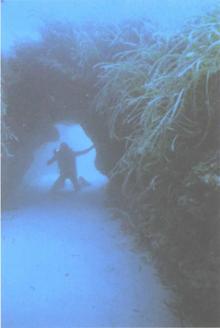 Underworld: The Mysterious Origins of Civilization
Underworld: The Mysterious Origins of Civilization The Master Game: Unmasking the Secret Rulers of the World
The Master Game: Unmasking the Secret Rulers of the World America Before
America Before Entangled
Entangled War God: Nights of the Witch
War God: Nights of the Witch War God: Return of the Plumed Serpent
War God: Return of the Plumed Serpent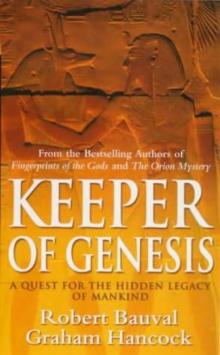 The Message of the Sphinx AKA Keeper of Genesis
The Message of the Sphinx AKA Keeper of Genesis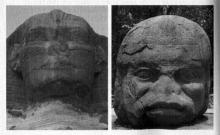 Fingerprints of the Gods
Fingerprints of the Gods The Sign and the Seal
The Sign and the Seal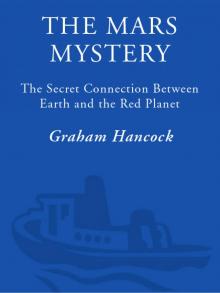 The Mars Mystery: The Secret Connection Between Earth and the Red Planet
The Mars Mystery: The Secret Connection Between Earth and the Red Planet Magicians of the Gods: The Forgotten Wisdom of Earth's Lost Civilization
Magicians of the Gods: The Forgotten Wisdom of Earth's Lost Civilization War God
War God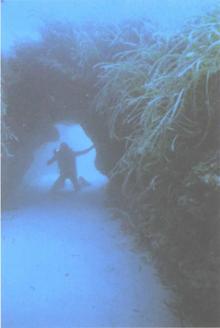 Underworld
Underworld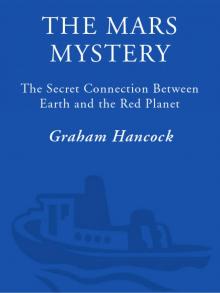 The Mars Mystery
The Mars Mystery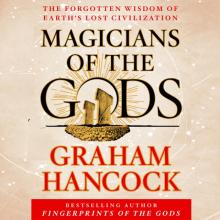 Magicians of the Gods
Magicians of the Gods The Master Game
The Master Game